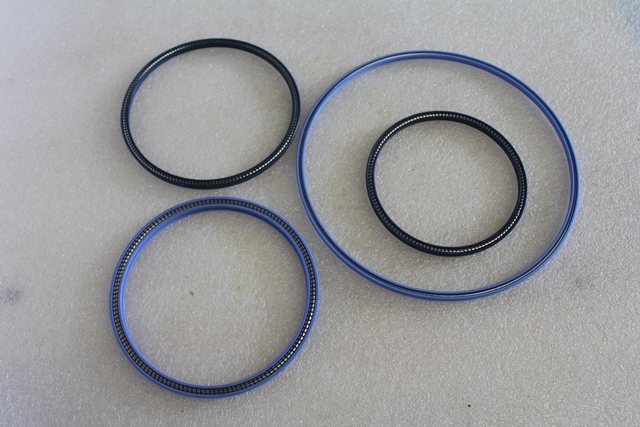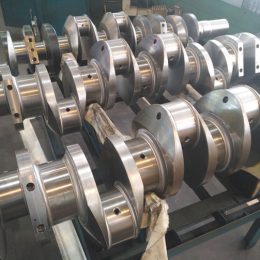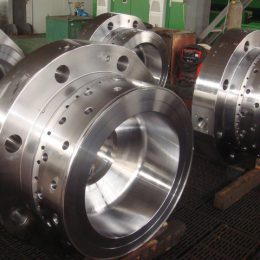All You Need to Know About U-Cup Seals for Marine Diesel Engines

A U-cup is a sealing ring used in hydraulic and pneumatic systems of marine diesel engines to seal, lubricate, and absorb shock and vibration. This article covers the functions, materials, and design of U-cup sealing rings to enhance engine efficiency and performance.
Introduction
If you’re familiar with the workings of marine diesel engines, you’ve probably heard of U-cup seals. These are essential components that play a crucial role in the sealing system of hydraulic and pneumatic systems. U-cup seals are named after their cross-sectional shape, which resembles the letter “U.” They are designed to provide a tight seal between the piston and cylinder wall of the engine, prevent fluid leaks, and reduce friction and wear between components. We’ll delve deeper into the functions, materials, and design of U-cup seals to help you understand their importance in marine diesel engines.
Functions of the U-Cup
U-cup sealing rings have three primary functions in the sealing system of a marine diesel engine:
1. Sealing
The U-cup provides an effective seal between the piston and the cylinder wall of the engine. It prevents the escape of fluids such as oil and fuel from the combustion chamber to the outside environment. It also prevents the entry of contaminants such as dust and water into the combustion chamber. This ensures that the engine runs smoothly and efficiently without any leakage or contamination.
2. Lubrication
The U-cup lubricates the piston and the cylinder wall of the engine, reducing friction and wear between these components. This helps prolong their lifespan and enhances their performance. Proper lubrication is critical for the smooth operation of the engine and ensuring that it operates at peak efficiency.
3. Absorption:
During the operation of the engine, it is normal for some degree of shock and vibration to occur. The U-cup absorbs these shocks and vibrations, preventing the piston from hitting the cylinder wall. This helps prevent damage and reduces the engine’s overall stress, which can enhance its efficiency and performance.
Materials of the U-cup:
The materials used to make U-cup seals can vary depending on the application and operating conditions of the engine. The most common materials used for U-cups are:
4. Nitrile (NBR):
Nitrile is a synthetic rubber that is resistant to oil, fuel, and hydraulic fluids. It is an affordable and widely available material that can operate at temperatures up to 100°C. Nitrile is suitable for use in engines that operate at lower temperatures and pressures.
5. Fluorocarbon (FKM):
Fluorocarbon is a synthetic rubber that is highly resistant to heat, fuel, and chemical corrosion. It is a more expensive material than nitrile but can operate at temperatures up to 200°C. Fluorocarbon is suitable for use in engines that operate at higher temperatures and pressures.
6. Polyurethane (PU):
Polyurethane is a thermoplastic material that is highly resistant to abrasion, tearing, and impact. It is a durable and flexible material that can operate at temperatures up to 120°C. Polyurethane is suitable for use in engines that operate in harsh conditions with high levels of vibration and shock.
Design of the U-cup:
The design of the U-cup is an essential factor in its functionality in sealing, lubricating, and absorbing shocks and vibrations. The U-cup has several design features that enable it to perform its functions efficiently.
Cross-sectional shape
The U-cup’s cross-sectional shape is crucial to its ability to provide an effective seal and lubrication. The shape of the U-cup resembles the letter “U,” which allows it to deform and conform to the piston and the cylinder wall, providing a tight seal and lubrication.
Lip geometry
The lip geometry of the U-cup determines the amount of force required to install and remove it and the amount of friction between the components. The lip of the U-cup contacts the piston and the cylinder wall and plays a critical role in maintaining a seal and lubrication.
Back-up ring
In some cases, the U-cup may have a back-up ring that provides additional support and stability. The back-up ring helps prevent the U-cup from rolling or twisting during the engine’s operation, ensuring that it performs its functions efficiently.
Materials of the U-cup
The U-cup can be made of various materials, depending on the application and the operating conditions of the engine. The most common materials used for U-cups are nitrile (NBR), fluorocarbon (FKM), and polyurethane (PU).
Nitrile (NBR)
Nitrile is a synthetic rubber that is resistant to oil, fuel, and hydraulic fluids. It is an affordable and widely available material that can operate at temperatures up to 100°C. Nitrile U-cups are commonly used in low-pressure hydraulic and pneumatic applications.
Fluorocarbon (FKM)
Fluorocarbon is a synthetic rubber that is highly resistant to heat, fuel, and chemical corrosion. It is a more expensive material than nitrile but can operate at temperatures up to 200°C. Fluorocarbon U-cups are commonly used in high-temperature applications, such as marine diesel engines.
Polyurethane (PU)
Polyurethane is a thermoplastic material that is highly resistant to abrasion, tearing, and impact. It is a durable and flexible material that can operate at temperatures up to 120°C. Polyurethane U-cups are commonly used in applications that require high resistance to wear and tear, such as heavy machinery.
Advantages of Using U-cups in Marine Diesel Engines
U-cups offer several advantages when used in the hydraulic and pneumatic systems of marine diesel engines. These advantages include:
Reliable sealing
U-cups provide a reliable seal between the piston and the cylinder wall of the engine. They prevent the escape of fluids and the entry of contaminants, ensuring that the engine operates efficiently.
Reduced friction
U-cups lubricate the piston and the cylinder wall of the engine, reducing friction and wear between these components. This reduces the engine’s maintenance requirements and prolongs its lifespan.
Absorption of shocks and vibrations
U-cups absorb shocks and vibrations that may occur during the operation of the engine. This prevents damage to the engine and enhances its performance and efficiency.\
FAQs
What is a U-cup used for in marine diesel engines?
A U-cup is used to provide a seal between the piston and the cylinder wall of the engine. It also lubricates the piston and the cylinder wall and absorbs shocks and vibrations during the engine’s operation.











